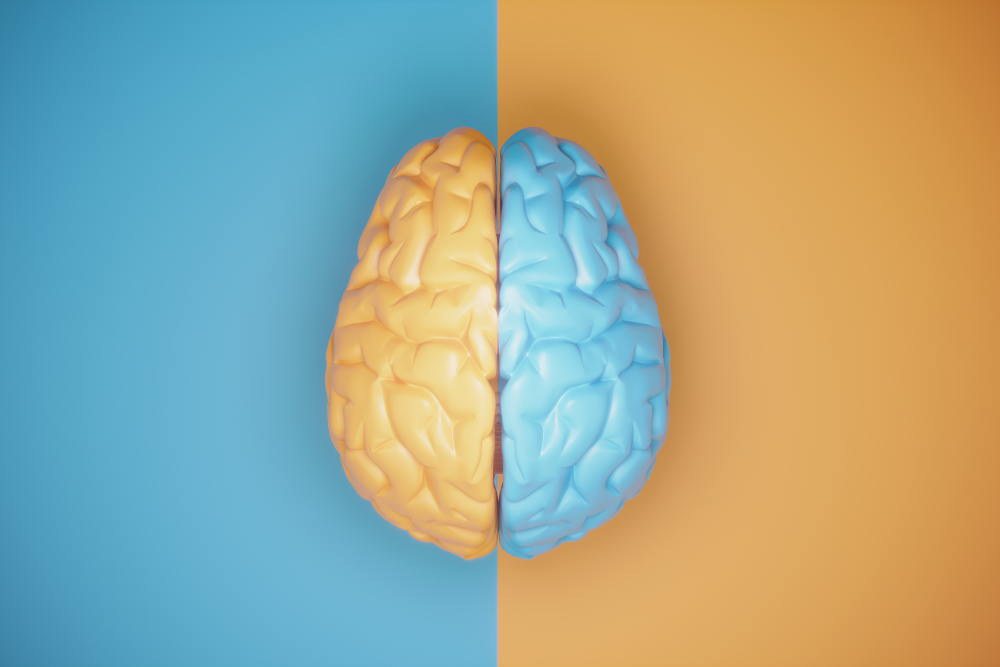WORDS: Assoc. Prof. Lyndsey Collins-Praino, Head of the Cognition, Ageing and Neurodegenerative Disease Laboratory in the School of Biomedicine at the University of Adelaide
As the mother of two little ones, aged 5 and under, it’s hard not to envy my friends who are the parents of teenagers. I covet their full nights of sleep, their uninterrupted toilet time, and the fact that they reach the end of their day without feeling completely touched out. Then I listen to their stories about the issues they face daily with their teens, navigating concerns around bullying, peer pressure, internet safety and struggles for independence, and I realise that perhaps watching Bluey for what feels like the zillionth time isn’t so bad after all.
The mystery of the teen brain
The teen brain can certainly feel like a mystery – what exactly is going on inside the head of your now not so little one? Neuroscience is shedding light on this, thanks in large part to advances in neuroimaging techniques, such as MRI.
From studies that track children and adolescents over time, we know that the brain follows a typical pattern of development, reaching its peak size at 10.5 in girls and 14.5 in boys.
From here, brain size declines slightly throughout our late teens and twenties, as unused or unneeded connections between brain cells are removed to improve efficiency (similar to the pruning of a plant).
However, just because the brain finishes growing in early adolescence doesn’t mean that it is finished maturing at this point. In fact, compared to other species, brain maturation takes significantly longer in humans. This prolonged period of development, particularly for regions like the prefrontal cortex, may have allowed for the evolution of complex cognitive functions in humans. The volume of white matter, which connects brain structures to one another, increases 1-2% per year throughout adolescence. This has several consequences, allowing for faster brain signal transmission, enhanced brain plasticity and increased connectivity between brain structures. Together, this allows for better information processing, as well as improvements in language, reading and cognitive function, throughout adolescence.
When does the teen brain mature?
Most notable are changes that occur in the prefrontal cortex during this period. The prefrontal cortex is important for “executive function,” which is our ability to plan, split attention, prioritise tasks, regulate emotions and inhibit impulses. Studies have revealed that brain circuits within the prefrontal cortex aren’t fully mature until well into our mid- or even late twenties. As this region matures, individuals become less reliant on brain structures associated with emotion and reward, which mature earlier, and instead increasingly draw upon circuits associated with rational executive function.
This explains why teens may engage more in risky behaviours, without thinking through potential consequences, or may struggle with long-term planning and prioritising tasks.
As prefrontal circuits mature, these behaviours tend to as well.
Given that the teen brain is still actively developing, it is primed to learn and adapt. Presenting teens with challenging activities—academically, physically, and creatively—will help to harness the power of this plasticity, with subsequent positive effects for brain development.
Sleep patterns for teens
Adequate sleep is also critical during this period, with experts recommending 8-10 hours of sleep per night from 13-18 years of age. Concerningly, few teens achieve this. This may be because sleep/wake patterns differ in teens compared to adults or children, with secretion of the sleep promoting hormone melatonin not beginning until about 10:45pm and continuing until 8am. This means that an earlier bedtime is unlikely to be the answer, with teens unable to fall asleep until melatonin levels rise. Instead, later school start times, allowing teens to sleep until at least 8am, may be beneficial. Finally, it is important to note that, given how plastic the brain is during this period, it is also more vulnerable to the effects of stress. In fact, the onset of several mental disorders, including schizophrenia, depression and anxiety, may occur in adolescence.
Encouraging mindfulness practices and communication during this time may help teens to better manage stress and promote resilience.
The teenage years are undoubtedly a time of changing relationships and new challenges, as teens increase their independence. But the next time that your teen has you at your wits end, remember: their brain is still very much a work in progress!
Associate Professor Lyndsey Collins-Praino is the Head of the Cognition, Ageing and Neurodegenerative Disease Laboratory (CANDL) in the School of Biomedicine at the University of Adelaide. She is also the founder of BrainChild, which offers informative lectures and hands-on activities to parents, caregivers, and educators, focused on exploring the brain changes that occur in each stage of child development and how this manifests as specific behaviours. Ultimately, the focus is on how to navigate challenges and maximise children’s potential during each stage.
For more information:
lyndsey.collins-praino@adelaide.edu.au
Follow KIDDO on Instagram and Facebook, and subscribe to our weekly newsletter






